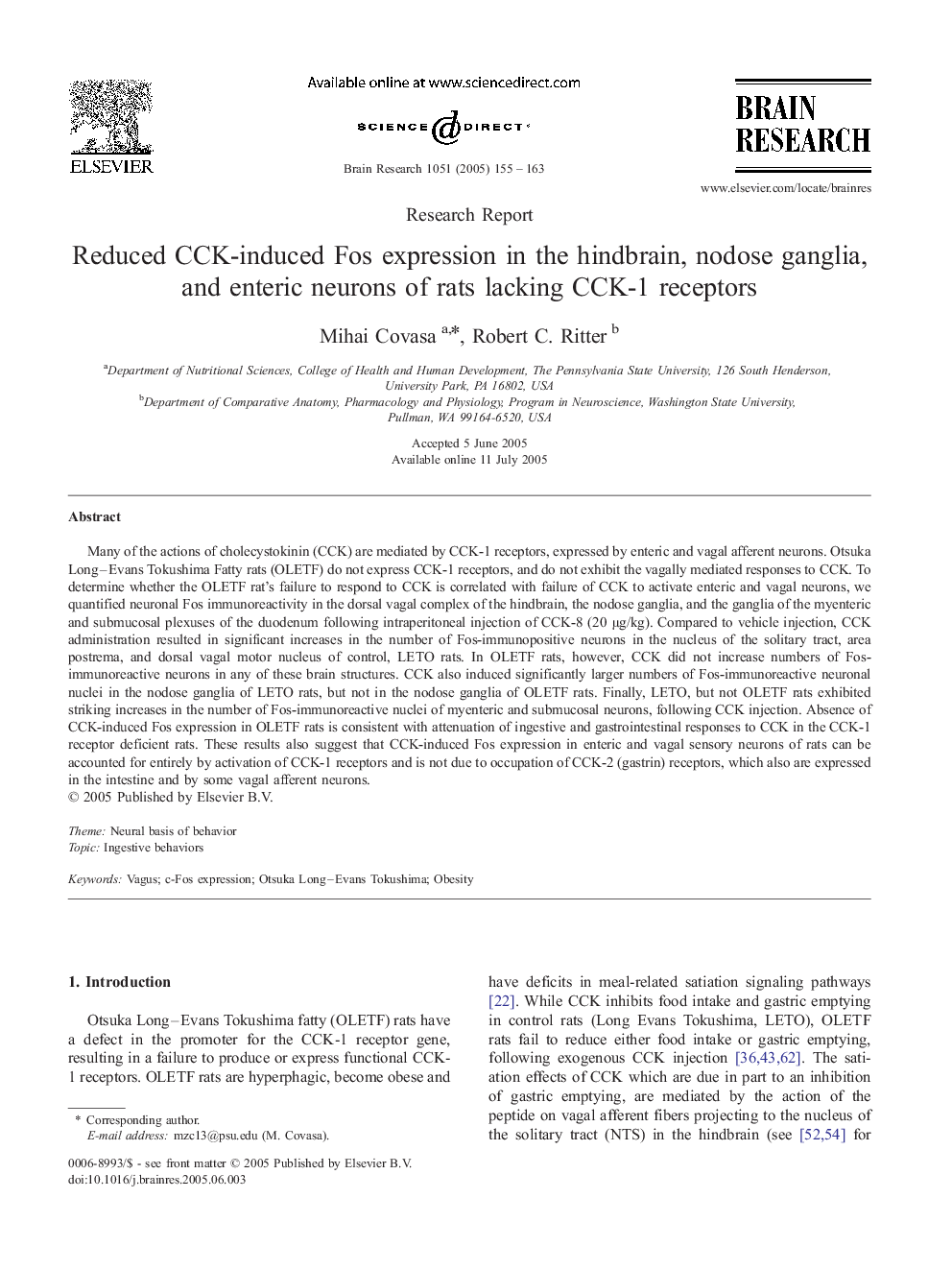| Article ID | Journal | Published Year | Pages | File Type |
|---|---|---|---|---|
| 9416062 | Brain Research | 2005 | 9 Pages |
Abstract
Many of the actions of cholecystokinin (CCK) are mediated by CCK-1 receptors, expressed by enteric and vagal afferent neurons. Otsuka Long-Evans Tokushima Fatty rats (OLETF) do not express CCK-1 receptors, and do not exhibit the vagally mediated responses to CCK. To determine whether the OLETF rat's failure to respond to CCK is correlated with failure of CCK to activate enteric and vagal neurons, we quantified neuronal Fos immunoreactivity in the dorsal vagal complex of the hindbrain, the nodose ganglia, and the ganglia of the myenteric and submucosal plexuses of the duodenum following intraperitoneal injection of CCK-8 (20 μg/kg). Compared to vehicle injection, CCK administration resulted in significant increases in the number of Fos-immunopositive neurons in the nucleus of the solitary tract, area postrema, and dorsal vagal motor nucleus of control, LETO rats. In OLETF rats, however, CCK did not increase numbers of Fos-immunoreactive neurons in any of these brain structures. CCK also induced significantly larger numbers of Fos-immunoreactive neuronal nuclei in the nodose ganglia of LETO rats, but not in the nodose ganglia of OLETF rats. Finally, LETO, but not OLETF rats exhibited striking increases in the number of Fos-immunoreactive nuclei of myenteric and submucosal neurons, following CCK injection. Absence of CCK-induced Fos expression in OLETF rats is consistent with attenuation of ingestive and gastrointestinal responses to CCK in the CCK-1 receptor deficient rats. These results also suggest that CCK-induced Fos expression in enteric and vagal sensory neurons of rats can be accounted for entirely by activation of CCK-1 receptors and is not due to occupation of CCK-2 (gastrin) receptors, which also are expressed in the intestine and by some vagal afferent neurons.
Related Topics
Life Sciences
Neuroscience
Neuroscience (General)
Authors
Mihai Covasa, Robert C. Ritter,
